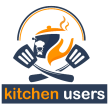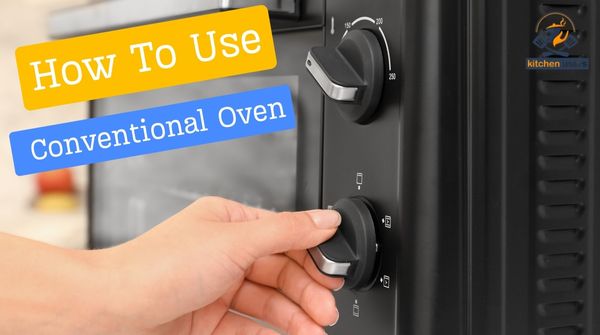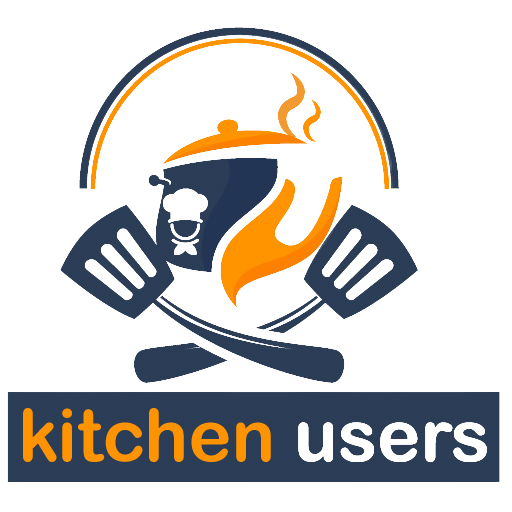Welcome to the world of cooking, where delicious meals are made and your oven is your best friend. Our culinary experts and research team have created a detailed guide to help you become an expert at using a conventional oven. This guide will open up a world of delicious possibilities. Because our team discussed here how to use conventional ovens from basic to advanced, which is very informative for a beginner to advanced user.
Learn the basics of using an oven, like controlling temperature and positioning racks. Take a journey to master these skills. Learn the details of baking, roasting, and broiling. Each technique is explained carefully for cooking success.
No matter your experience level, this guide will be your helpful companion in the kitchen. Let us guide you through the symphony of flavors, textures, and aromas that await within the depths of your conventional oven.
First, you will become familiar with a conventional oven.
What is a Conventional Oven?
A regular oven, which is another name for a standard oven, heats the air inside with heating elements. The hot air then moves around the food, cooking it all the way through. If you look at the image we have used above, it will be convenient for you to understand. Conventional ovens typically have two heating elements, one at the top and one at the bottom. The heating elements produce heat. The heat is transferred to the food. This helps the food cook. The heated element on top is used to broil and cook food, and the element on the bottom is used to roast and bake.
As a user, you should know the names of both heating elements.
- Tubular heating elements
- Ribbon heating elements
Tubular heating elements: These are the most common type of heating element in conventional ovens. These are metal tubes filled with insulating material made of nichrome or Kanthal. The tube gets hot and transfers heat outward when an electric current flows through it. Tubular heating elements are often shaped to fit the oven’s design by coiling or bending them.
Ribbon heating elements: Conventional ovens sometimes use these less common heating elements, especially for broiling. They are not as popular as tubular ones. Ribbon heating elements are created using a thin metal strip, often nichrome or Kanthal. This strip is flattened and then folded repeatedly. These are better than tube heaters and distribute heat more evenly.
Hope you got to know about conventional ovens in detail; now let’s see how to use conventional ovens properly.
Read more: What Are the Benefits of Convection and Conventional Ovens?
How to Properly Use Conventional Oven
Our team found two types of people from our research
New users and others—the majority don’t know.
Today, we will share our best research and experience on the use of conventional ovens. Let’s start!
Power On and Preheating
Most new users ask, Why do I need to preheat a conventional oven? Before you start cooking, you should make sure the oven is hot enough. This makes sure the oven is sufficiently hot to cook the food all the way through and evenly. How long it takes to heat up will depend on the type of oven and how hot it is. But below is a possible table of preheating times for common oven temperatures:
| Temperature (°F) | Temperature (°C) | Preheating Time (minutes) |
| 325 | 163 | 10-15 |
| 350 | 177 | 15-20 |
| 400 | 200 | 20-25 |
| 450 | 230 | 25-30 |
| 500 | 260 | 30-35 |
Check the manual that came with your oven for exact preheating times.
Rack Positioning
We discovered 16 places where oven racks were not positioned correctly. This caused some portions to be overcooked while others were undercooked. That’s why the rack plays a significant role in achieving the desired cooking outcome. For baking cakes and pastries, the middle rack is best. It distributes heat evenly and browns it evenly, too. To roast meats, you may want to use a lower rack. This lets the intense heat from the bottom element caramelize the surface, creating a crispy exterior.
Place the Food in the Oven
After preparing the oven and making the food, it means preheating, then carefully putting it in the oven. If you are using more than one pan, make sure they are spread out properly on the racks so that air can flow between them.
Cooking time
Set the cooking timer according to the recipe. This “Recipe book” tells you the best time and temperature for cooking. It’s essential to learn them now. Refer to the recipe for the recommended cooking time and temperature. Check the food carefully while it’s cooking to make sure it doesn’t burn or get too cooked.
Rotate the Food
For certain dishes like roasted meats or vegetables, rotating the food halfway through cooking is important. This makes sure that the food cooks evenly on all sides. The reason why this is important is because we saw that the heat in the oven is not always evenly distributed. For example, the top of the oven may be hotter than the bottom of the oven. This can cause food to cook unevenly, with some parts being more cooked than others.
Read more: Do Conventional Ovens Give off Radiation – Exclusive Guide 2023
Meat Thermometer
To check the temperature of the meat inside, you can use two methods:
Method 1: Using a Meat Thermometer
Method 2: Using a Toothpick
A meat thermometer is the best and most reliable way. It directly measures the temperature of the meat, providing a precise indication of its doneness. For safe eating and the best taste, each type of meat needs to be at a certain temperature. Let’s know:
First, push the thermometer into the meat until it reaches the desired depth. The recommended depths for different types of meat are:
- Ground beef: 2 inches
- Whole cuts of beef: 1-2 inches
- Pork: 160°F (71°C)
- Lamb: 145°F (63°C)
- Poultry: 165°F (74°C)
Read the temperature on the thermometer. The meat is safe to consume when it reaches the following internal temperatures:
- Ground beef and pork: 160°F (71°C)
- Whole cuts of beef: 145°F (63°C) and 160°F (71°C) for well-done
- Lamb: 145°F (63°C)
- Poultry: 165°F (74°C)
Toothpick Test
The toothpick test is a simpler and more traditional method for checking doneness, particularly for baked goods and cakes. Put a toothpick in the center to see if it’s done, and watch how the food comes out. If the toothpick comes out clean, the food is likely done. However, this method is less precise than a meat thermometer and may not be suitable for all types of meat.
Use oven mitts or potholders to carefully take the food out of the oven once it’s done.
Note: We have a resarchful post on the “Convection Or Conventional Oven For Baking Cakes.”
Hopefully, with the help of our expert team, you’ve learned how to use your conventional oven. After that, you will know.
What kind of foods cook best in a conventional oven?
Based on our experience as a research team, we recommend using conventional ovens for various types of cooking, like roasting meats and baking treats. We saw that conventional ovens are great for making casseroles, stews, pizzas, and cooking fish and seafood. The oven’s hot air makes food crispy and helps baked goods rise evenly. Casseroles and stews taste better when cooked slowly with gentle heat, blending flavors together. Pizzas come out with crunchy crusts and melted cheese. The oven can cook fish and seafood differently, like baking, broiling, or poaching. This keeps them tender and evenly cooked.
Conclusion
Using a conventional oven is all about unlocking the potential in your kitchen. To bake, roast, or broil, you need to know about the bake and broil elements and the correct temperatures. That’s the secret, but our team mentioned it above. With this knowledge, you can confidently turn simple ingredients into delicious creations. Just remember to know your oven, follow the “Recipe book” that our experts mention above, and enjoy the process. So, set the temperatures for your oven, let the elements do their work, and enjoy cooking. If you have any opinions, please share it with us in the comment box below. Your opinion is valuable to us!
Related post: How To Use Convection Oven
As a 10 years veteran in the culinary industry, I have developed a passion for all things kitchen. With a deep understanding of food preparation and cooking techniques, I am a true kitchen specialist. My experience working in Khedmot kitchen has allowed me to hone my skills and become an expert in creating delicious and visually appealing dishes.
I am a creative and innovative chef, constantly experimenting with new ingredients and cooking methods to bring unique and memorable dining experiences to my customers. In addition to my culinary expertise, I am also highly organized and able to effectively manage a team of kitchen staff, ensuring that all tasks are completed efficiently and to a high standard.
I am dedicated to my craft and always strive to create exceptional dining experiences for my customers. Whether it’s developing a new menu, training my kitchen team, or working with local suppliers, I am always looking for ways to improve and take my kitchen to the next level.
If you’re looking for a skilled and passionate kitchen specialist, look no further. I am eager to bring my expertise to your team and help take your kitchen to the next level.



1 thought on “How To Use Conventional Oven”